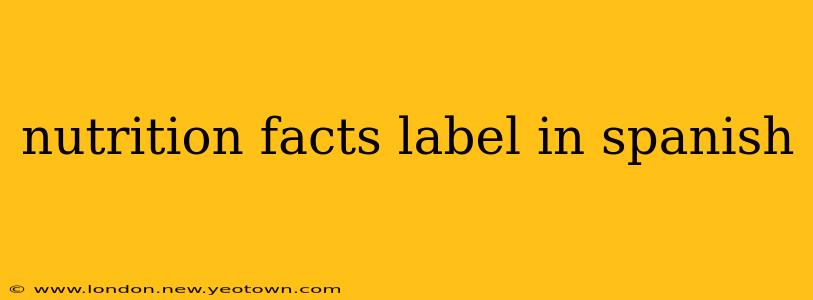Decoding the Spanish Nutrition Facts Label: A Culinary Adventure
Imagine you're strolling through a bustling mercado in Spain, ready to fill your basket with delicious local treats. But wait! Before you grab that tempting bag of patatas fritas or that enticing jar of dulce de leche, you want to make informed choices. That's where understanding the Spanish nutrition facts label comes in. It's your passport to healthy eating, no matter where your culinary journey takes you.
This isn't just about numbers and grams; it's about empowering yourself to make choices that align with your health goals. Let's embark on a fun and informative exploration of the Spanish nutrition label, tackling some common questions along the way.
¿Qué significa "Valor Energético"? (What does "Valor Energético" mean?)
"Valor Energético" is the cornerstone of the label – it's the total energy content of the food, usually expressed in kilocalories (kcal) or kilojoules (kJ). Think of it as the fuel your body gets from this particular food. A higher "Valor Energético" indicates a higher calorie count. This is crucial for managing your daily caloric intake, whether you're aiming to lose weight, maintain your current weight, or gain muscle.
¿Cómo se interpreta la información sobre grasas, carbohidratos y proteínas? (How do I interpret the information on fats, carbohydrates, and proteins?)
The Spanish label clearly outlines the grams of fat, carbohydrates, and protein per serving. Understanding these macronutrients is key to a balanced diet.
- Grasas (Fats): Pay attention to the breakdown of saturated, unsaturated, and trans fats. Saturated and trans fats should be consumed in moderation, while unsaturated fats are generally considered healthier.
- Hidratos de Carbono (Carbohydrates): This section often includes the amount of sugars. Too much added sugar can negatively impact your health, so be mindful of this figure.
- Proteínas (Proteins): Proteins are essential for building and repairing tissues. The amount of protein listed helps you understand the food's contribution to your daily protein needs.
¿Qué significan los valores de sodio y azúcar? (What do the sodium and sugar values mean?)
- Sodio (Sodium): High sodium intake can contribute to high blood pressure. Check the label to ensure you're not exceeding your recommended daily sodium intake.
- Azúcares (Sugars): As mentioned before, added sugars should be consumed in moderation to avoid health issues like weight gain and tooth decay.
¿Dónde puedo encontrar la información sobre el tamaño de la porción? (Where can I find information about serving size?)
The serving size ("Tamaño de la porción") is clearly stated on the label, along with the number of servings per container ("Porciones por envase"). This is crucial for accurate interpretation of the nutritional information. Don't forget that the values listed are per serving, not for the entire package.
¿Hay diferencias entre la etiqueta nutricional española y la de otros países? (Are there differences between the Spanish nutrition label and those of other countries?)
While the core information remains consistent across many countries (energy, macronutrients, etc.), minor differences in presentation, terminology, and specific requirements may exist. The overall goal, however, remains the same: to provide consumers with clear and readily accessible nutritional information.
Beyond the Basics: Making Informed Choices
Understanding the Spanish nutrition facts label isn't just about deciphering numbers; it's about making conscious choices that support your well-being. Consider your individual dietary needs, your overall health goals, and your preferences when selecting foods. Don't be afraid to compare labels to find the best options for you. Your health journey is a personal one, and the nutrition facts label is a valuable tool to guide you. ¡Buen provecho! (Enjoy your meal!)

